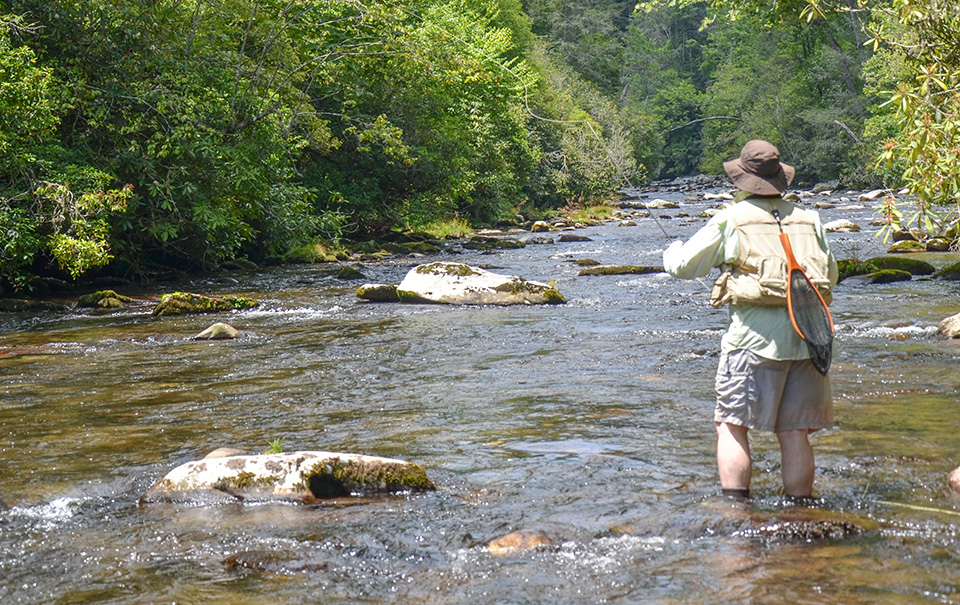By Nick Carter
The season for dry flies is upon us. Here are a few tips to keep in mind when trout are popping bugs on the surface.
Watch the Debris: It’s easy for anglers to see when drag is so bad that the fly leaves a wake, but trout—and especially pressured trout—inspect food closer. They perceive small inconsistencies that make your fly look just a little less than natural. Called micro-drag, this can kill your success with dry flies.
A good way to judge your drift is to watch real bugs on the water. Or watch twigs or leaves adrift in the run. By comparing your drift to objects near it in the flow, you’ll be able to determine if you really are fishing drag free.
Manage Line: Managing line is a skill all of us can work on. The best advice is to keep your casts short. There may be situations when you’re tempted to throw a football field worth of line, but remember you’ll have to manipulate all that line on the drift. The less line you have on the water, the easier it is to work with. Wade thoughtfully and put yourself in position to present the fly with a shorter cast.
Ditch The Dropper: A dry fly paired with a dropper nymph is a great rig for prospecting and covering water to pick up fish. Two flies are better than one, right?
Not always. The difference between surface and sub-surface flow, as well as the fact that your two flies are constantly pulling on each other, mean you’re usually not achieving optimal presentation with either.
Dress For Success: My brother once said it doesn’t matter how good you are at something as long as you look cool doing it. That’s not what we’re talking about here; we’re talking about floatant.
Trout notice a fly gobbed down with so much floatant that it leaves an oily sheen. Use just enough to keep your fly afloat. Concentrate on the parts of a fly that make it float, meaning the underside and hackle. Dressing upright wings only weighs them down, which can affect the way a fly sits on the water.
On a similar subject, wear something cotton or carry a drying patch to squish the water out of a soggy fly. Water-wicking fabrics are great, but they don’t work for drying flies.
Adjust: If things are going on everywhere except at the end of your leader, it means you’re doing something wrong. Try trimming the hackle to make the fly sit lower in the water. Tie on longer, finer tippet to cut down on micro-drag. Try an emerger or soft hackle to see if the trout are actually feeding just below the surface. Try holding your mouth at a different angle… just do something to figure out why your fly is being snubbed.
Nick Carter is the author of “Flyfisher’s Guide To North Carolina & Georgia,” which is available on Amazon. Signed copies are available by emailing the author at nsc8957@gmail.com.
